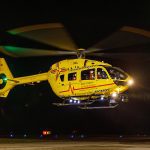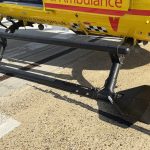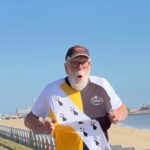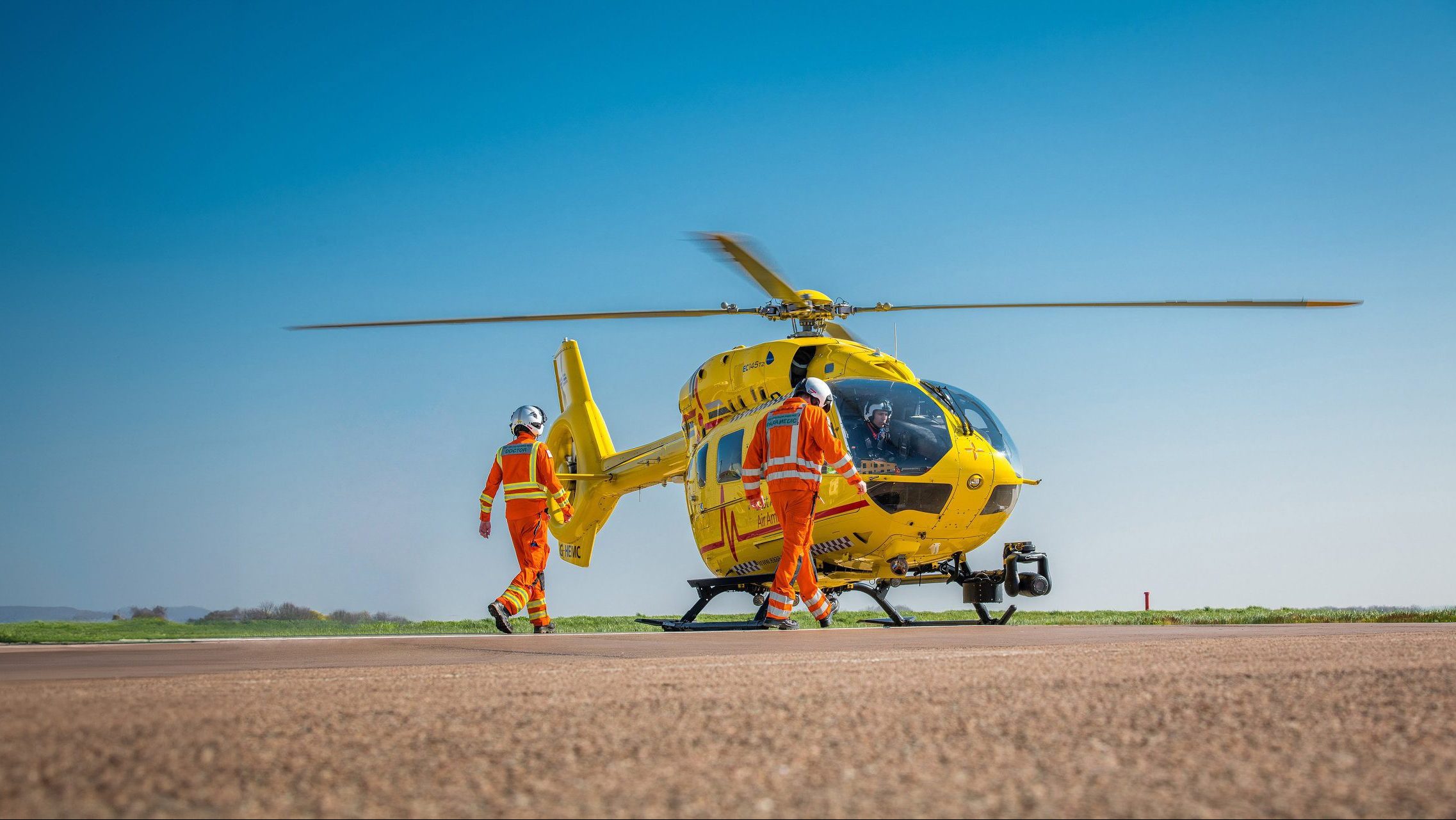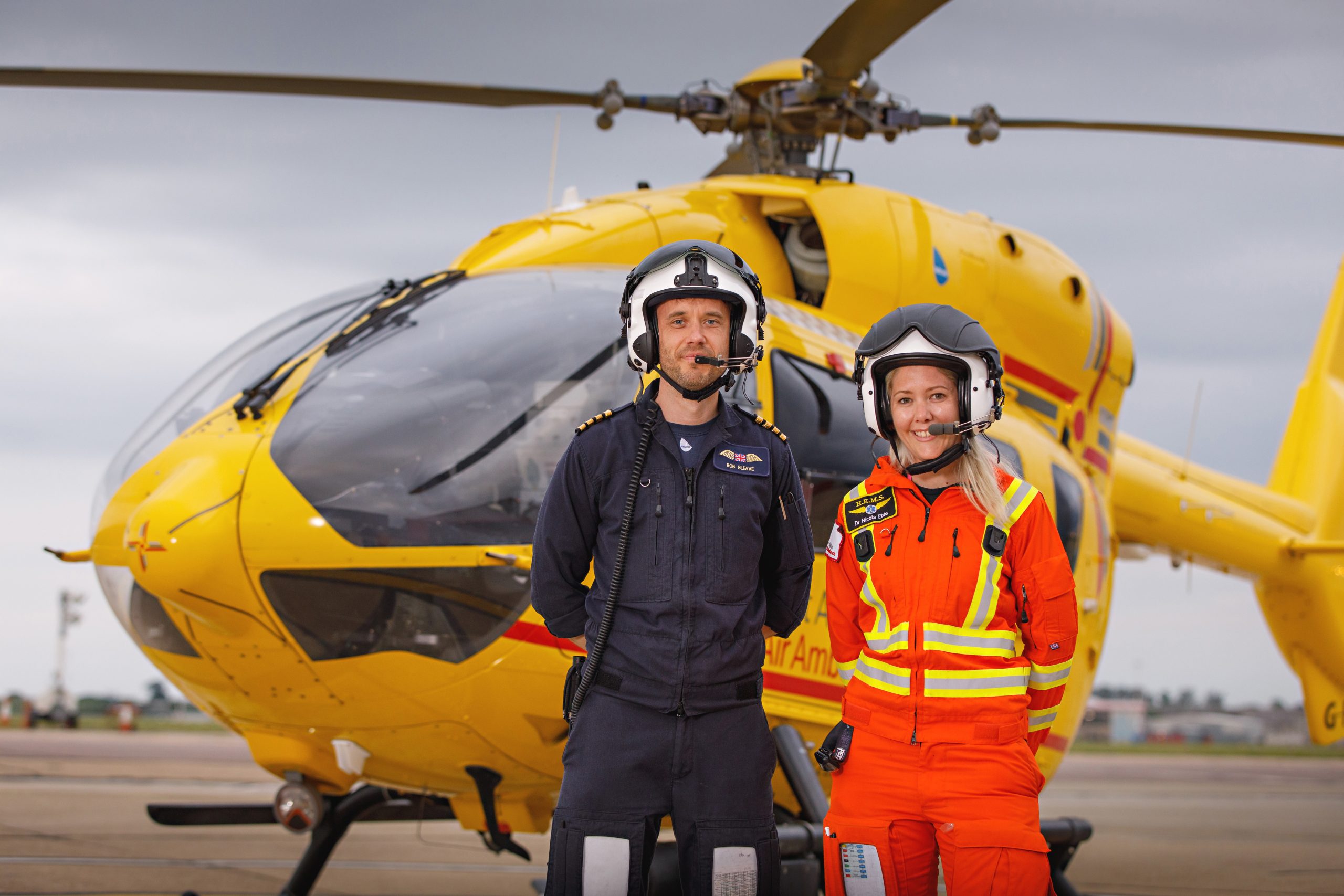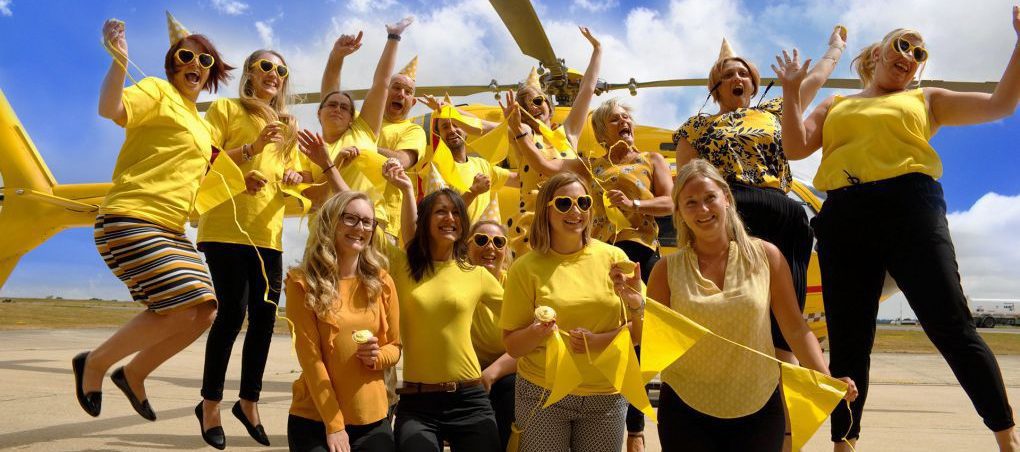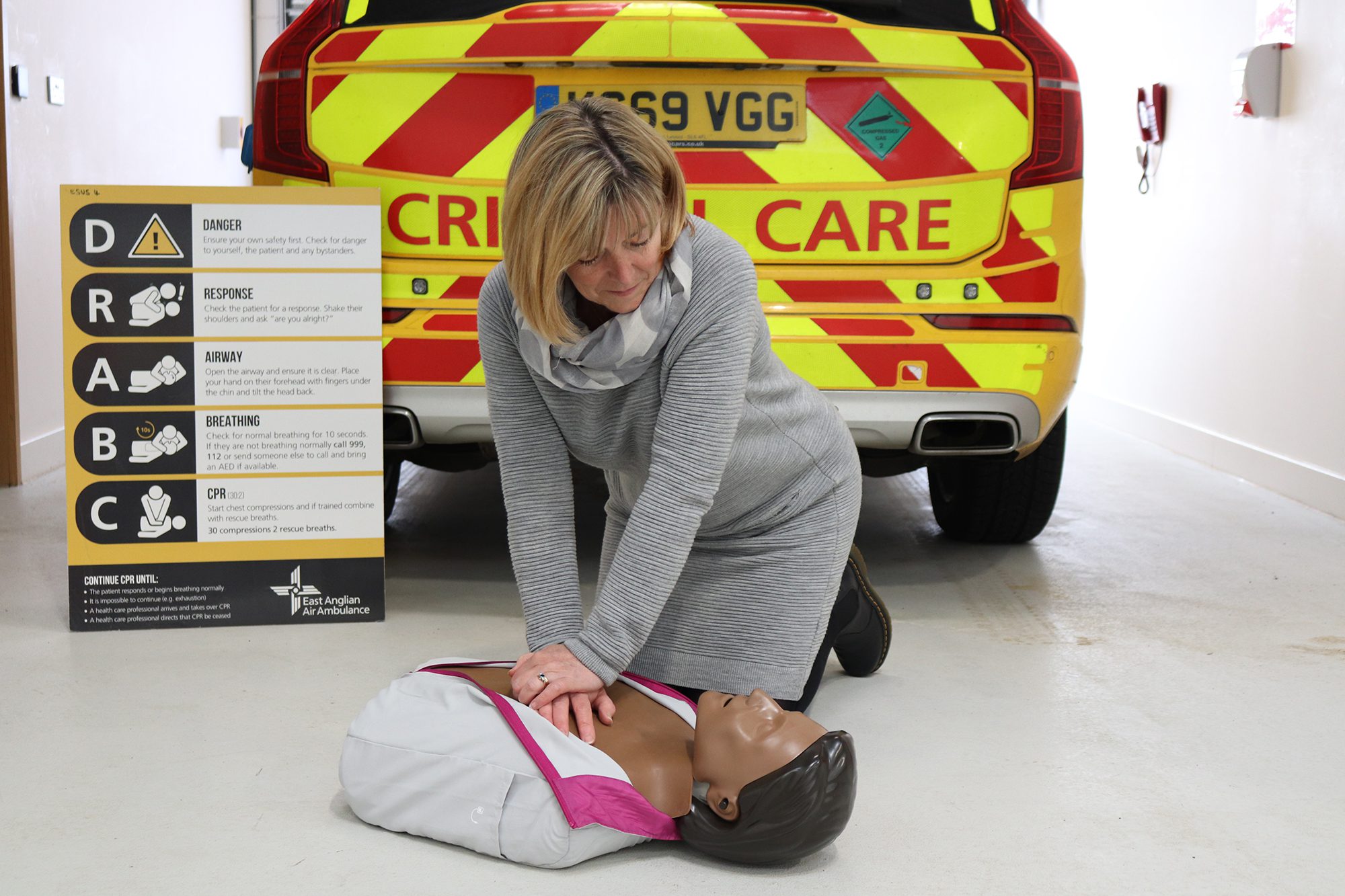16 Oct 2023
Behind the scenes of a cardiac arrest mission
Approximately one in four of the medical emergencies to which we are tasked are cardiac arrests. When every second counts, starting the chain of survival at the scene as soon as possible is vital, and we all have our part to play.
We spoke to East Anglian Air Ambulance (EAAA) Critical Care Paramedic (CCP), Joe Dowsing about what happens when the EAAA phone rings for critical care for an out-of-hospital cardiac arrest patient, and why early bystander CPR and use of a defibrillator on scene is so important.
The 999 call
“For somebody experiencing an out of hospital cardiac arrest, it is vital they receive quality early CPR from the public and professionals to provide the best possible patient outcome. Being able to recognise someone is in cardiac arrest and calling 999 for an ambulance is the first step to helping them.
Part of our role as critical care paramedics with EAAA involves shifts working within an East of England Ambulance Service (EEAST) control room. In here we can listen in to 999 calls, speak to 999 callers and speak to ambulance crews. When we identify a patient for whom we judge EAAA can add to their care, we alert the duty team. They make their way to the patient by air or Rapid Response Vehicle (RRV). Meanwhile, a trained call handler is talking the caller through chest compressions and telling a bystander where the nearest defibrillator is. As soon as the EEAST paramedics arrive, they take over CPR and defibrillation and add airway support and some medications.”
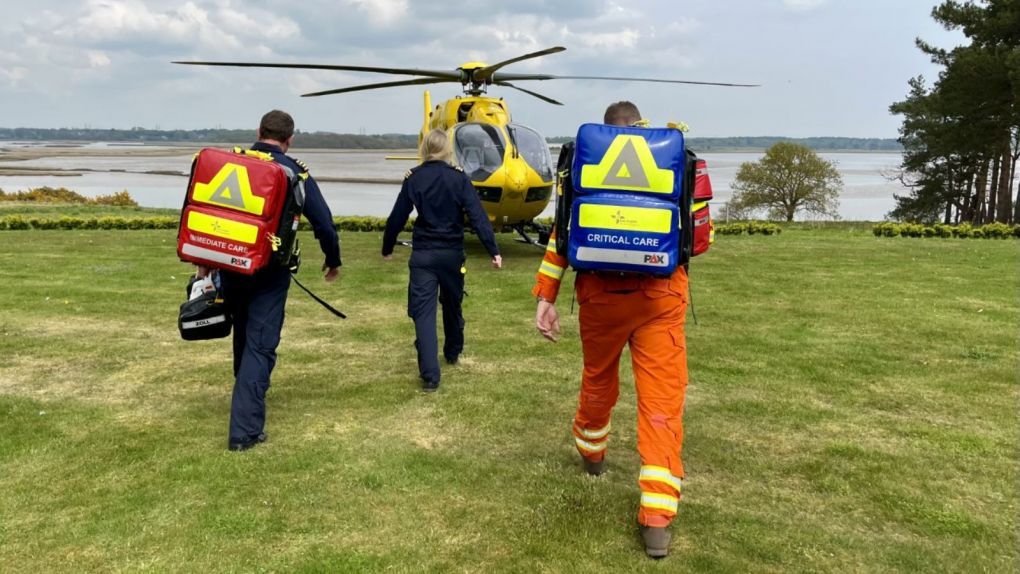
Bringing the emergency department to scene
“When the EAAA team arrive, there is a lot of kit we bring to scene: Our immediate care bag, critical care bag, monitor/defibrillator, ventilator and LUCAS chest compression machine. When we get to the patient’s side, we take handover from the EEAST crews. We must rapidly establish the cause of the collapse, what care has been delivered so far, reassess the patient and formulate a plan for our next steps. Our goal is to reverse cardiac arrest and achieve return of spontaneous circulation.
We work in unison with our EEAST colleagues. EAAA pre-hospital doctors and critical care paramedics look to bring enhanced care to the patient. This means advanced airway management and ventilation, surgical central venous and arterial access, a chest compression device, advanced drug therapy and point of care ultrasound.?
Once we achieve a return of spontaneous circulation, we have the option of pre-hospital emergency anaesthesia, advanced ventilation, invasive blood pressure monitoring and a wealth of medications to improve stability. Once a patient is stable, we can look to transport them to a specialist cardiac centre – the helicopter makes lengthy journeys from the most rural areas possible.”
Communication and support
“Another key role for the EAAA team is communication with a patient’s loved ones to keep them fully informed of what is happening.
EAAA’s dedicated Aftercare team also supports patients and their families after a medical emergency and we leave contact cards with families at the scene to enable them to get in touch for further support.”
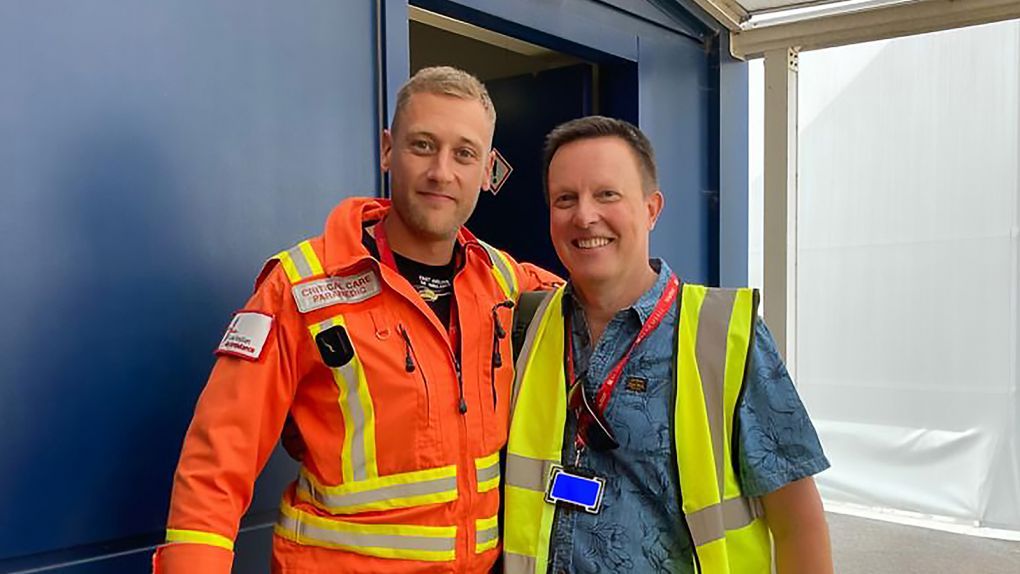
Play your part in improving patient outcomes
“In my time at EAAA, I have been lucky enough to meet several cardiac arrest survivors. Some of which I have personally cared for. Meeting Dan I was struck by his resilience and his ability to overcome such a life-changing event. It is an honour to have played a small part in the chain of survival that worked so well on that day and I’ve actually seen Dan out and about jogging when I’ve been out doing the same!
If I can stress two key messages, they would be:
The importance of bystander CPR. EAAA provides free CPR and defibrillator training to equip people with life-saving skills. It is extremely unlikely that anything we do for a patient will help if they haven’t received bystander CPR. CPR prolongs the window of opportunity to reverse cardiac arrest and save a life.
Charitable services like EAAA are vital in someone’s hour of need, so public support, fundraising and donations really does save lives.”
Thank you, CCP Joe for sharing what happens behind the scenes of an EAAA cardiac arrest tasking.
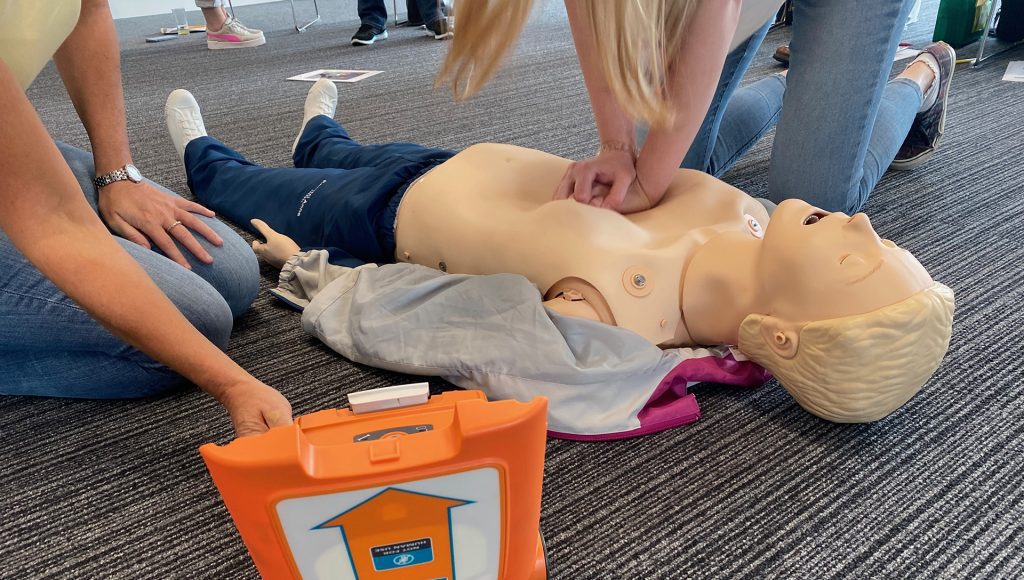
Be somebody else’s life-saver
Every year approximately 12,000 people suffer a cardiac arrest in the East of England. Only about 66% of those who suffer an out-of-hospital cardiac arrest receive any form of bystander cardiopulmonary resuscitation (CPR) before the arrival of the ambulance service, and less than 20% have a defibrillator (AED) deployed before emergency services arrive.
The out-of-hospital cardiac arrest survival rate in the UK is only around 8%; however, if a defibrillator is used alongside effective CPR within the first 3-5 minutes, the chances of survival can increase to between 40% – 70%. We are committed to training as many people as possible in CPR, and how to use a defibrillator so together we can save more lives.
Our Community CPR Volunteer and Trainer-led sessions will provide all attendees with Basic Life-saving skills. The course will equip you with the skills to recognise a cardiac arrest, effectively deliver CPR and confidently use a community defibrillator (AED).
